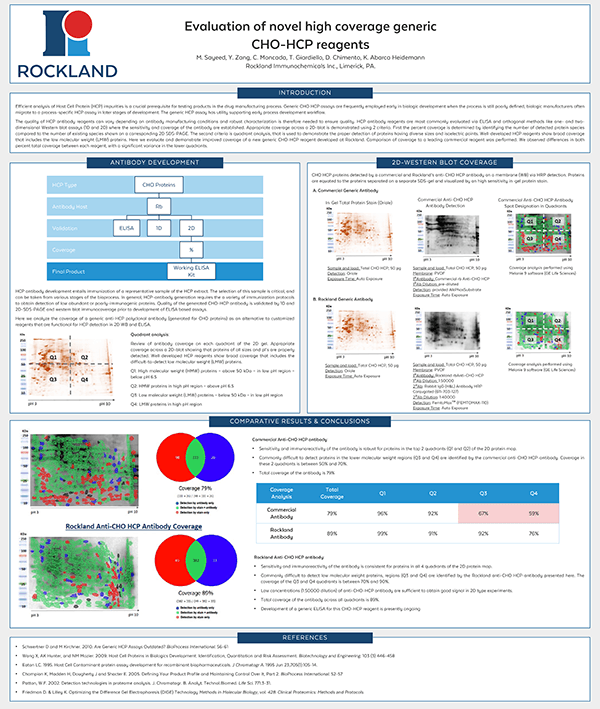Evaluation of Novel High-Coverage Generic CHO-HCP Reagents
Efficient analysis of Host Cell Protein (HCP) impurities is a crucial prerequisite for testing products in the drug manufacturing process. Generic CHO HCP assays are frequently employed early in biologic development when the process is still poorly defined, biologic manufacturers often migrate to a process-specific HCP assay in later stages of development. The generic HCP assay has utility supporting early process development workflow.
The quality of HCP antibody reagents can vary depending on antibody manufacturing conditions and robust characterization is therefore needed to ensure quality. HCP antibody reagents are most commonly evaluated via ELISA and orthogonal methods like one- and two dimensional Western blot assays (1D and 2D) where the sensitivity and coverage of the antibody are established. Appropriate coverage across a 2D-blot is demonstrated using 2 criteria. First the percent coverage is determined by identifying the number of detected protein species compared to the number of existing species shown on a corresponding 2D SDS-PAGE. The second criteria is quadrant analysis, that is used to demonstrate the proper detection of proteins having diverse sizes and isoelectric points. Well-developed HCP reagents show broad coverage that includes the low molecular weight (LMW) proteins. Here we evaluate and demonstrate improved coverage of a new generic CHO-HCP reagent developed at Rockland. Comparison of coverage to a leading commercial reagent was performed. We observed differences in both percent total coverage between each reagent, with a significant variance in the lower quadrants.
